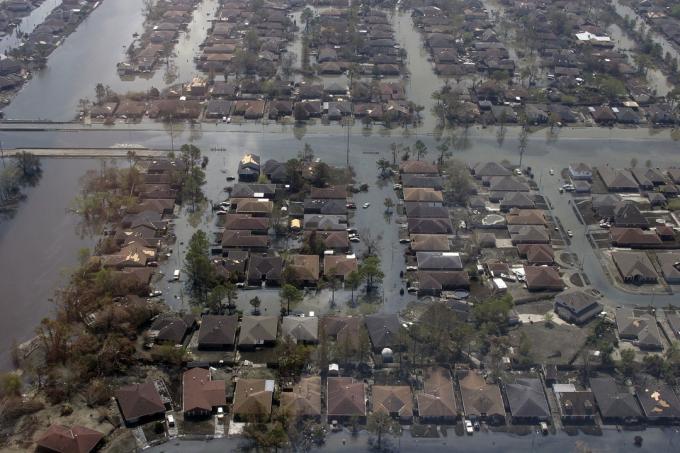The greenhouse effect is a natural phenomenon and fundamental for the maintenance of adequate temperatures for life on the planet, but it is being intensified by the action of man and causing the global warming.
The intensification of this phenomenon happens due to the emission of greenhouse gases, such as carbon dioxide (CO2) and methane (CH4), released mainly by the burning fossil fuels.
These gases are concentrated in the atmosphere and make it difficult for some of the sun's rays to be reflected back into space, causing the Earth's temperature to rise to alarming levels.
Since the Industrial Revolution, the amount of greenhouse gases in the atmosphere has grown and today the planet is 0.7º C warmer than it was a hundred years ago.
High temperatures cause imbalances in nature and climate change that can have devastating consequences for society. Know some of these consequences:
sea level rise
Melting ice caps and thermal expansion due to rising temperatures are causing sea level rise. Between 1901 and 2010, the sea level is estimated to have risen 19 centimeters.
If global warming continues, in 2100 the sea could be between 15 and 90 centimeters higher than today. This means that many coastal cities would disappear and thousands of people would be left homeless.
The rise in water temperature can also cause diversion of water courses and extinction of marine animals unable to survive in warmer waters.
The melting of the polar ice caps also has another harmful effect on global warming: the reduction of albedo. Albedo is the ability to reflect solar radiation from ice.
With less albedo, less radiation is reflected and consequently more radiation is absorbed, further increasing the temperature on Earth.

know more about greenhouse effect and global warming.
Imbalance of ecosystems
With the increase in air and water temperatures, ecosystems become unbalanced and can cause the extinction of species and changes in the reproduction and migration regimes of animals.
Biodiversity is threatened with the extinction of species. It is estimated that if the average temperature were to rise between 1.5º C and 2.5º C, around 30% of the world's animal and plant species would become extinct.
In the Amazon, the world's most biodiverse forest, a temperature rise of around 2°C and 3°C would cause a reduction of 25% to 40% of its trees.

Understand what a ecosystem and know what the endangered species.
extreme weather events
Global warming contributes to the intensification of extreme weather events and environmental disasters, such as heavy rains with floods, droughts, hurricanes and cyclones.
Until 1990, the average of natural disasters was 260 events per year. In 2003, this average already reached 337 cases per year.
Hurricane Katrina, which happened in the United States in 2005, and Catarina, which happened in 2004 in the state of Santa Catarina are examples of environmental disasters that are likely to be linked to warming global.
Although hurricanes are formed naturally, scientific studies show a greater incidence of these phenomena as a result of rising temperatures and climate change.
 Flood after Hurricane Katrina in New Orleans, United States.
Flood after Hurricane Katrina in New Orleans, United States.
know more about environmental disasters and climate changes.
Desertification of fertile areas
The intensification of the greenhouse effect and the rise in temperatures may also result in the desertification of tropical areas of the planet that are currently productive.
Loss of soil fertility can seriously result in food shortages, which in turn can result in food security and malnutrition problems.
If the emission of greenhouse gases is not reduced, it is estimated that by 2025 the countries of Africa will have lost ⅔ of their productive land, Asia would lose ⅓ and South America would lose ⅕.
A worrying scenario, since the countries of these regions are underdeveloped and, therefore, have fewer resources to overcome such difficulties.

Food production
Food production and animal husbandry are also dependent on climatic conditions and can be affected by the greenhouse effect and global warming.
High air and soil temperatures can reduce fertility and droughts can make the soil insufficiently moist so that vegetable production is damaged.
The high concentration of carbon dioxide (CO2) in the air also has consequences for nature, as it can affect the photosynthesis process and consequently the growth of plants.
Another complicating factor for crops are the pests and diseases that affect crops. As temperatures increase, their dynamics can change and result in a greater number of losses.
All problems in food production can reflect an increase in hunger and food insecurity, especially in poor countries, where food shortages are already a reality.

Learn more about carbon dioxide.
damage to health
Global warming also has direct consequences on the health of human beings. Illnesses directly related to heat can become more frequent, such as heat stroke, heat stress and cardiovascular diseases.
Respiratory diseases are also more prevalent in this scenario, especially due to excessive air pollution, which is largely made up of greenhouse gases.
In addition, another major concern is the increased proliferation of tropical diseases transmitted by mosquitoes such as dengue, Zika, malaria, chikungunya and yellow fever.
Studies also show that high temperatures are related to a greater number of cases of diseases such as leishmaniasis, leptospirosis and cholera.
 Mosquito aedes aegypti - transmitter of dengue, yellow fever, Zika and chicungunha.
Mosquito aedes aegypti - transmitter of dengue, yellow fever, Zika and chicungunha.
Learn more about dengue.
water availability
Water scarcity may be caused by changes in rainfall patterns, water evaporation and changes in soil moisture. Furthermore, droughts and environmental disasters can affect the quality of water available for human consumption.
Melting mountain glaciers are also a risk to the availability of water, as many rivers are born from the tops of mountains.
The rise in sea level is another risk to the water supply, because when it moves over land, sea water can meet rivers and contaminate them with salt water.

See also the meaning of pollution.

